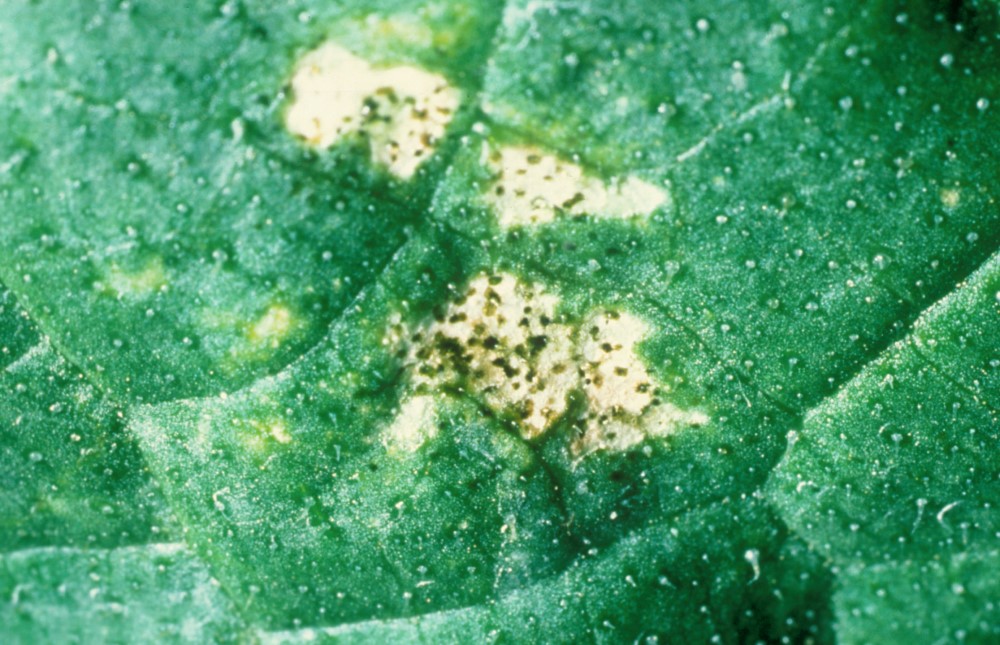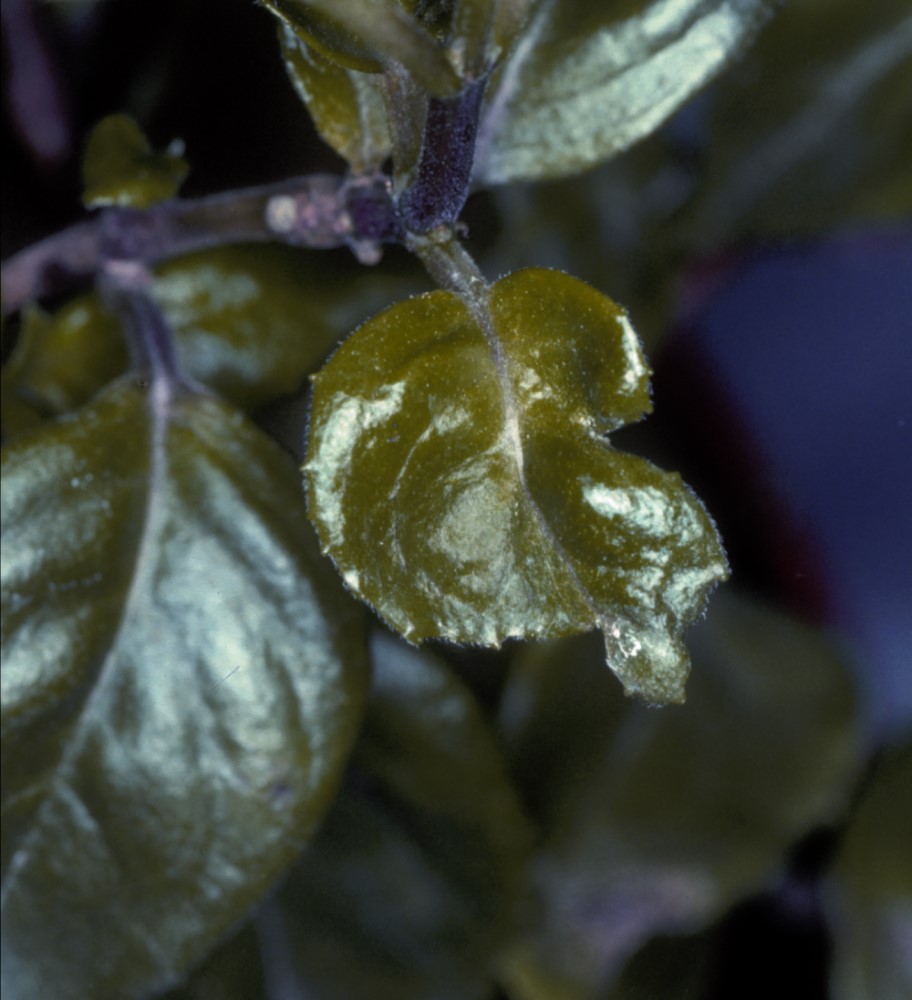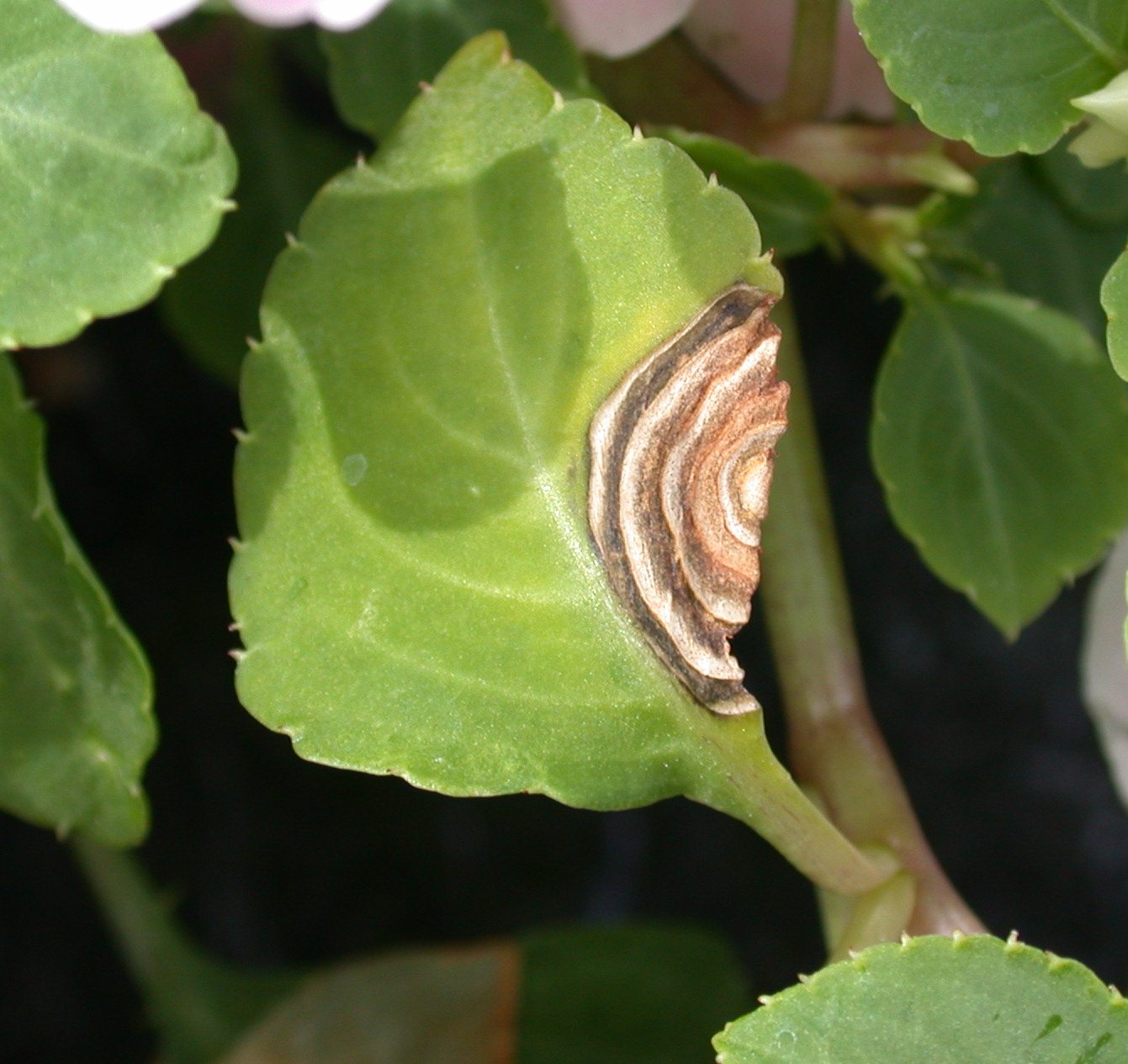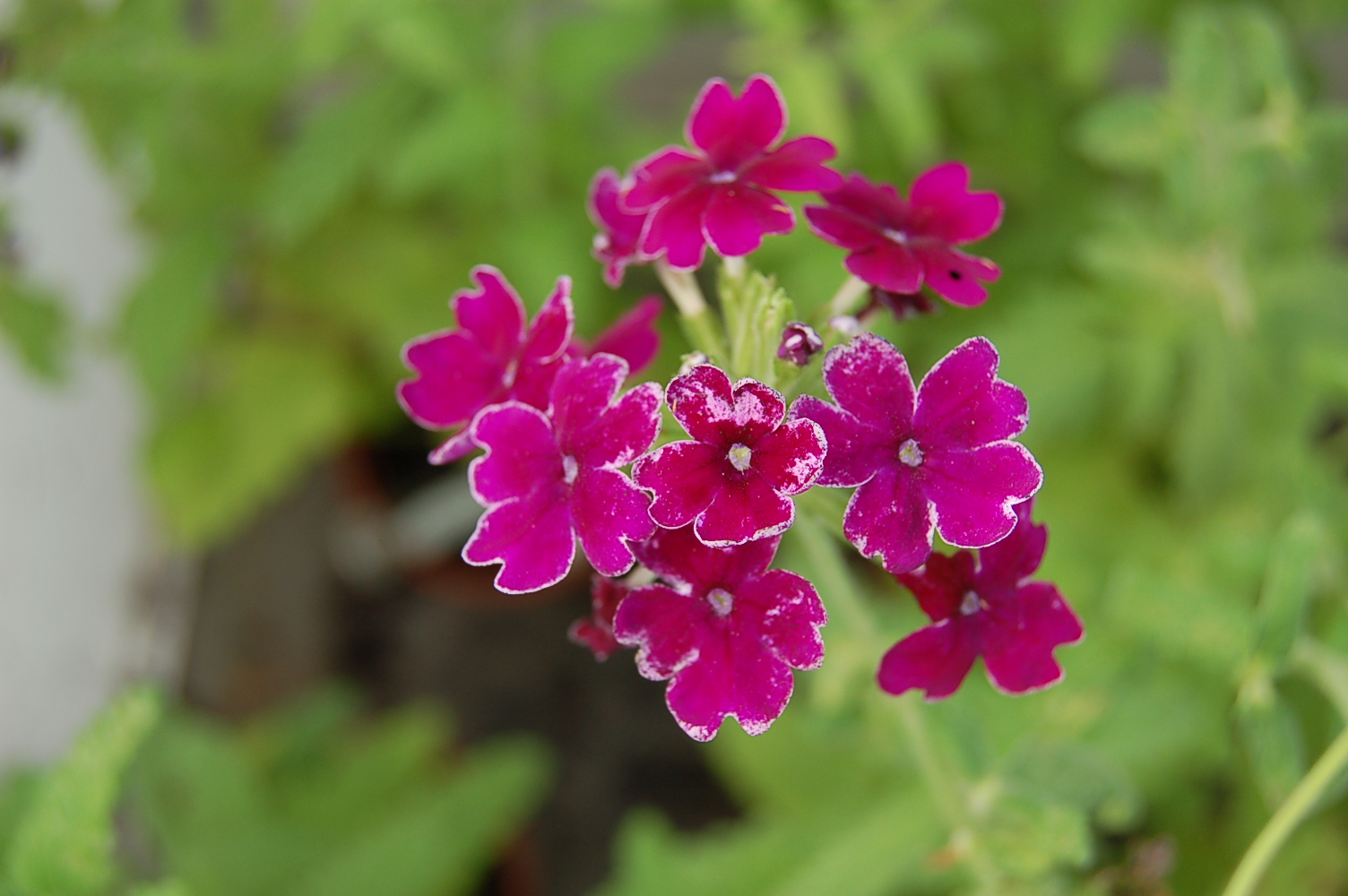Please click here to access the main AHDB website and other sectors.
- Home
- Knowledge library
- Thrips damage symptoms on protected ornamental crops
Thrips damage symptoms on protected ornamental crops
Recognise symptoms of thrips feeding damage and of viruses spread by thrips on commonly infested protected ornamental plants.
Back to: Thrips control in protected ornamental crops
Direct thrips feeding damage
Thrips feeding damage can downgrade plants or render them unmarketable, and severe infestations can cause significant plant losses. All thrips species feed by piercing plant cells and sucking out their contents, leaving bleached or silvery flecks or patches on leaves and petals which can then become brown and necrotic. Small black faecal flecks are usually visible within the bleached areas. Feeding damage can also cause leaf and flower distortion and stunting.
Western flower thrips (WFT) will damage both leaves and flowers, but flowers and flower buds are preferred if present. Although Japanese flower thrips can occur in flowers, this species tends to be more of a leaf feeder. The resulting browning and scarring of leaf undersides can be more severe than with WFT and the damage can predispose the plants to infection with Botrytis.
Bleached patches on leaf caused by thrips feeding, with small black faecal specks

Image © ADAS Horticulture.
Leaf distortion on Fuchsia caused by western flower thrips feeding

Image © ADAS Horticulture.
Western flower thrips feeding damage on Verbena flowers
Image © ADAS Horticulture.
Banded-wing palm thrips feeding damage causes characteristic silvering of the leaves. The two quarantine pests, melon thrips and chilli thrips can be particularly damaging. Melon thrips feeds on leaves (initially along the midrib and veins), stems and flowers, causing silvery scars, distortion, yellowing and stunting. Severe infestations can kill plants. In the case of Chrysanthemum, unlike WFT, melon thrips tends to feed on upper leaf surfaces rather than in the flowers. Chilli thrips feeds on young leaves, flower buds and fruits, causing scarring, malformation, curling, blackening and shrivelling. Severe infestations can cause total defoliation.
Damage caused by thrips-transmitted viruses
Some thrips species can transmit tospoviruses, introduced to the nursery either via infected plant material, then spread by resident thrips vectors, or via immigrating virus carrying adult thrips, flying in from nearby infected crops.
Tomato spotted wilt virus (TSWV) and impatiens necrotic spot virus (INSV)
These two viruses are currently the most important tospoviruses in the UK, although outbreaks are now less common than in previous years, probably due to improved methods of WFT control. In the UK, WFT is the vector for both tomato spotted wilt virus and impatiens necrotic spot virus. Onion thrips were responsible for spreading TSWV in the UK in the 1930’s, but it is possible that current UK populations of this thrips species do not spread contemporary strains of the virus. Japanese flower thrips can also transmit TSWV (but not INSV), but so far no cases of this have been confirmed in the UK.
First instar WFT larvae acquire the virus when they feed on infected plants, and when they develop into adults they transmit the virus to other plants during feeding. Western flower thrips are a very efficient vector and just a few infected thrips can spread the virus to many plants.
There is a wide range of ornamental host plants for both viruses. Plant hosts for both TSWV and INSV include Chrysanthemum, Cineraria, Cyclamen, Dahlia, Dianthus, Fuchsia, Impatiens, lily, Nemesia, Primula, Ranunculus and Verbena. In the UK, TSWV has also occurred on aster and INSV has occurred on Coleus, Diascia and Lobelia.
Symptoms of both viruses include chlorotic or necrotic leaf spots, leaf rings, leaf line patterns, distortion, bronzing, yellowing and necrosis, stem blackening and growing point death.
Tomato spotted wilt virus is currently classed as a ‘regulated pest present within the country’ (RNQP) concerning propagating material of ornamental plants and other plants for planting intended for ornamental purposes, and it is notifiable to APHA in Begonia x hiemalis, Capsicum annuum, Chrysanthemum, Gerbera, Impatiens and Pelargonium.
Impatiens necrotic spot virus is also currently classed as a RNQP, concerning propagating material of ornamental plants and other plants for planting intended for ornamental purposes and it is notifiable to APHA in Begonia x hiemalis.
Leaf ring symptoms of tomato spotted wilt virus on Impatiens leaf

Image © ADAS Horticulture.
Chrysanthemum stem necrosis virus (CSNV)
This is a notifiable quarantine virus and is also spread by WFT. There was one case of chrysanthemum stem necrosis virus in the UK. It was recorded in 2002, in Chrysanthemum plants imported from Brazil. Symptoms included dark stem lesions and some leaf necrosis. The infected crop was removed and the virus eradicated.
Iris yellow spot virus (IYSV)
This virus was confirmed for the first time in the UK in 2007, in Lisianthus. The vector of iris yellow spot virus is the onion thrips. In Lisianthus, IYSV symptoms include pale necrotic leaf spots, necrotic streaks on stems, plant stunting and flower distortion. The virus is no longer notifiable to APHA.
Useful links
For further information on TSWV see the AHDB Factsheet 23/10 ‘Tomato spotted wilt virus in protected edible crops’.
Authors
Jude Bennison, ADAS Horticulture.
Got a question? Ask a member of the team:
Web page content correct as of May 2021.
Topics:
Sectors:
Tags:


